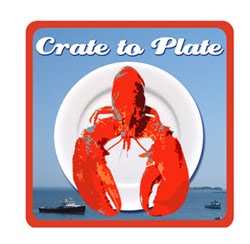
Love lobster? Well we hope you enjoy these “lobstah” fun facts!
General information about our little red friend: The first recorded lobster catch was in 1605. That’s a long relationship that we have had with our red little friend!
Before the lobster gained popularity in the mid-19th century it was considered a mark of poverty served to prisoners, servants, and widows. Servants even specified in employment agreements that they would not eat lobster more than twice a week!
In 1828 Maine passed a law banning out-of-state lobster-men. So you can trust that your Maine lobster has been caught by a true Maine-ah!
The largest Maine lobster catch weighed in at nearly 71 million pounds for a value of over $285 million. Now that’s a lot of lobstah!
The largest recorded lobster was caught off of Nova Scotia weighing in at a crushing 44 lbs. and an astonishing 3 ½ feet length.
True life: lobster Depending on the temperature of the water (lobsters grow slower in colder waters), it takes a lobster 5-7 years to grow to maturity and a size that is catchable.
Our little red friends stay with us for a long time—some are even capable of living up to 100 years!
Lobsters naturally have one larger forward claw, causing them to be identified as left-handed or right-handed. The meat from the smaller claw is more tender and sweeter, thus considered more succulent.
Lobsters can regenerate their antennae, legs, and even claws. Losing a claw is common as lobsters will frequently amputate them to escape any danger on the ocean floor.
Lobsters grow by shedding their shell and developing into a new, larger shell--this process is called molting. The molting of lobsters is how we get our soft and hard shell lobsters. Lobsters that have recently shed their old shell in order to grow a new one are considered soft shell or “new shell”. The shell is much easier to get into and the lobster meat tends to be much sweeter than hard shell. A hard shell lobster has already grown into its shell. That is why these lobsters are so much harder to get into!
A young lobster in its first 5-7 years will molt about 25 times a year while mature lobsters only molt about once or twice a year—usually in the summer. Older lobsters only need to molt once every 3-4 years.
Want to know if a lobster is male or female? It’s easy! Located on the lobster’s tail are swimmerets-- small flipper like appendages that help the lobster swim. Look the first pair of swimmerets closest to the lobster’s head. If they are hard and bonelike your lobster is a male, but if soft and featherlike it is female!
Lobster eggs spend at least ten months on a female lobster, the colder the water, the longer it takes the eggs to hatch!
When the eggs are ready to hatch, the mother will shake them out of their shell, releasing them as larvae. The larvae will float to the surface for 4 to 6 weeks. This makes the larvae very vulnerable to attack by fish, birds, and other sea life. In fact, less than .1% of larvae survive this surface period before sinking to the ocean floor to develop.
Eating lobster: The best time of the year to enjoy lobster is after Labor Day! Lobstermen bring in over 50% of the annual Maine harvest during the fall season.
Maine set a size limit of 3 ¼” for lobsters to allow all juveniles to mature and reproduce before they are harvested. Lobster lovers typically dine on 1 lb, 1 ¼, and 1 ½’ crustaceans!
Lobsters are a fantastic “dieting” food because they are high in protein and
low in fat. Compare a 3 ½ ounce lobster of 90 calories (without butter of course) to the 163 calories found in the same amount of chicken or 280 calories in a sirloin steak. How could you go wrong?
It is a common misconception that lobsters scream when they are boiled.
Don’t worry, the sound you are hearing is actually the whistling sound of steam escaping the shell. Eat on!
Lobster meat will become tough if overcooked. To avoid this, check the lobster frequently. When the meat turns opaque it is done and should be immediately removed from heat.
After you have boiled your lobster use a pair of kitchen shears to snip the claws. This will allow for the water to drain and keep your plate and other food from getting soggy!
If you are having lobster for a formal occasion, pre-crack the lobster for your guests by cutting lengthwise through the underside of the tail with scissors (just the shell, not the meat). You can also crack the claws to save some pounding at the dinner table. Enjoy!
Don’t miss out on the flavorful meat in the legs! To get this succulent meat you can either suck it out or use a rolling pin to roll down the sections of the legs and push the meat out of the end.
Additional cooking of already boiled lobsters tends to toughen the meat and make it less palatable. So use your left over lobster meat for a salad or a cold dish.
Want to brush up on your lobster lingo? Check out our post on
lobster terms used by real lobstermen!






















